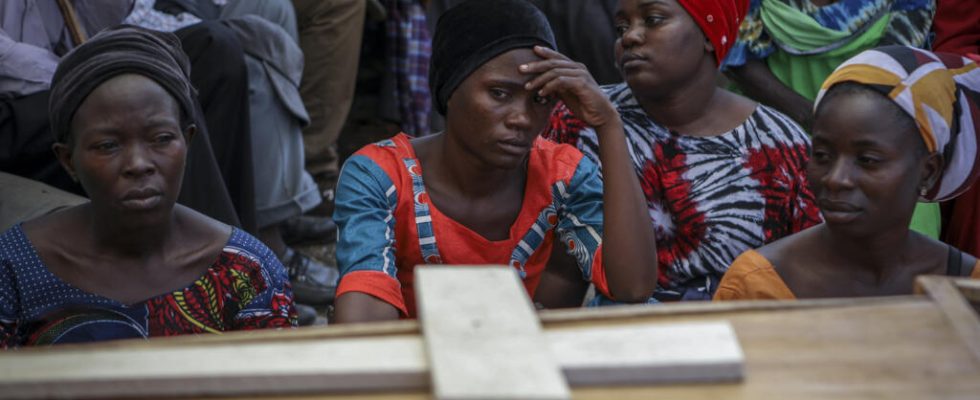The families of the victims of the attack on a secondary school of suspected ADF which left 43 dead on the night of June 16 to 17 in the town of Mpondwe in the district of Kasese, on the border with the DRC, continue to mourn . But more than a week after the attack, some are still in doubt.
With our special correspondent in Mpondwe, Lucie Mouillaud
After the deadly attack at school of her 17-year-old son, Kule Safati Mirundu did everything to find traces of her child.
“ I immediately went to the hospital, but my son was not among the dead. Afterwards, I quickly went to school, but the bodies were burned to such a level that we could not recognize ours. »
A total of 17 bodies have not yet been identified, most of them found in the school’s young boys’ dormitory. For the father of the family, the most difficult thing is not knowing if his son died during the attack, or if he was kidnapped by the assailants with other students. ” I feel bad. Even now, I don’t feel like myself, especially since I don’t know what happened to my son, if he was among the kidnapped or the burnt. Even now, his mother is in bed, sick with sadness, as she does not know if her son will have a decent burial. »
Minister of State for Information Goddfrey Kabbyanga told Mpondwe on Monday that three students were abducted by the ADF. As for the unidentified bodies, the investigation is well underway, said Lt. Mate Magwara, one of the district security officers.
” We took the bodies to Fort Portal, where the police are conducting DNA testing to identify the relatives of each deceased, so they can have a proper burial. »
First results of DNA tests must be returned on Tuesday, and part of the bodies, once identified, given directly to their relatives.
Return to the scene of a lightning attack
At the scene of the attack, the ruins of the school bear witness to the assault by the rebel group, originally from Uganda but based in eastern DRC for more than twenty years. The shattered windows and the wall blackened by the flames suggest the violence of the fire started by the assailants. ” Here was the boys’ dormitory, where most of the students were burned to ashes, unrecognizable “.
In the room, there are only the scrap structures of the bunk beds and some belongings covered with rubble. Masereka Jockus, chairman of the Lhubirira secondary school local council, heard gunshots around 10:30 p.m. on June 16, before being called by some residents of the neighborhood. ” They said their shops were looted, I had to go out at night, and run to get a vehicle from the police to pick up these people who were badly injured and take them to the hospital “, he recalls.
A total of three school buildings were burned by the suspected ADF, the two dormitories and a storage room. A lightning attack, completed in a few minutes, observed the neighbors of the establishment. ” They saw these ADF flee with some students. They had given them sacks of cassava flour, maize and beans, forcing them to carry this food for them. »
According to the authorities, the last attack of the ADF in this locality took place in November 1996. With about fifty dead, it is considered to be the very first mass offensive of the rebel group created a few years earlier.
Read alsoAfter the attack in Uganda, what consequences for the fight against the ADF in the DRC?
